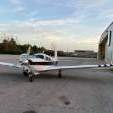CIES fuel senders vs overhaul
-
Members Online
- dkkim73
- acekng1
- UMRPIlot8
- kortopates
- Bartman
- Medflyer
- MikeOH
- Skyland
- Ragsf15e
- laytonl
- N201MKTurbo
- Grumpy
- Bunti
- Marc_B
- katzhome
- M Terry
- Flymu2
- jetdriven
- Daily
- ProtoFly
- toto
- PT20J
- Dustoff49
- tcal780
- GeeBee
- Rwsavory
- Falcon Man
- spaceman39a
- hammdo
- Blaze
- SKI
- eman1200
- ELysek1
- TCC
- exM20K
- dzeleski
- dlthig
- Barneyw
- DMM
- Aerodon


Recommended Posts
Join the conversation
You can post now and register later. If you have an account, sign in now to post with your account.